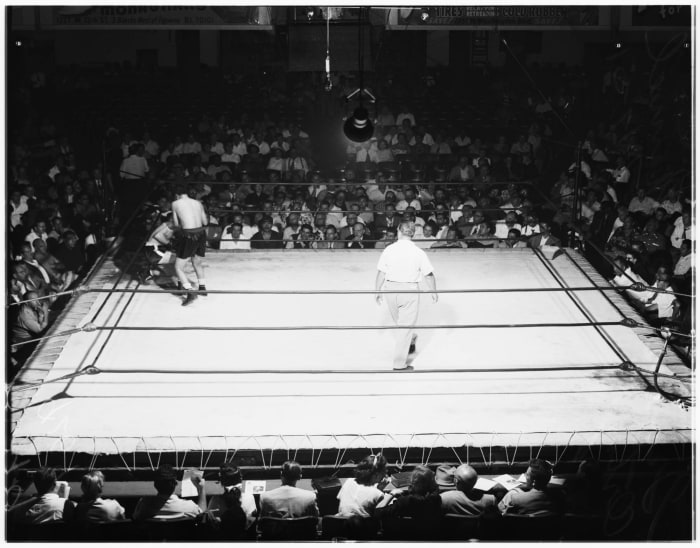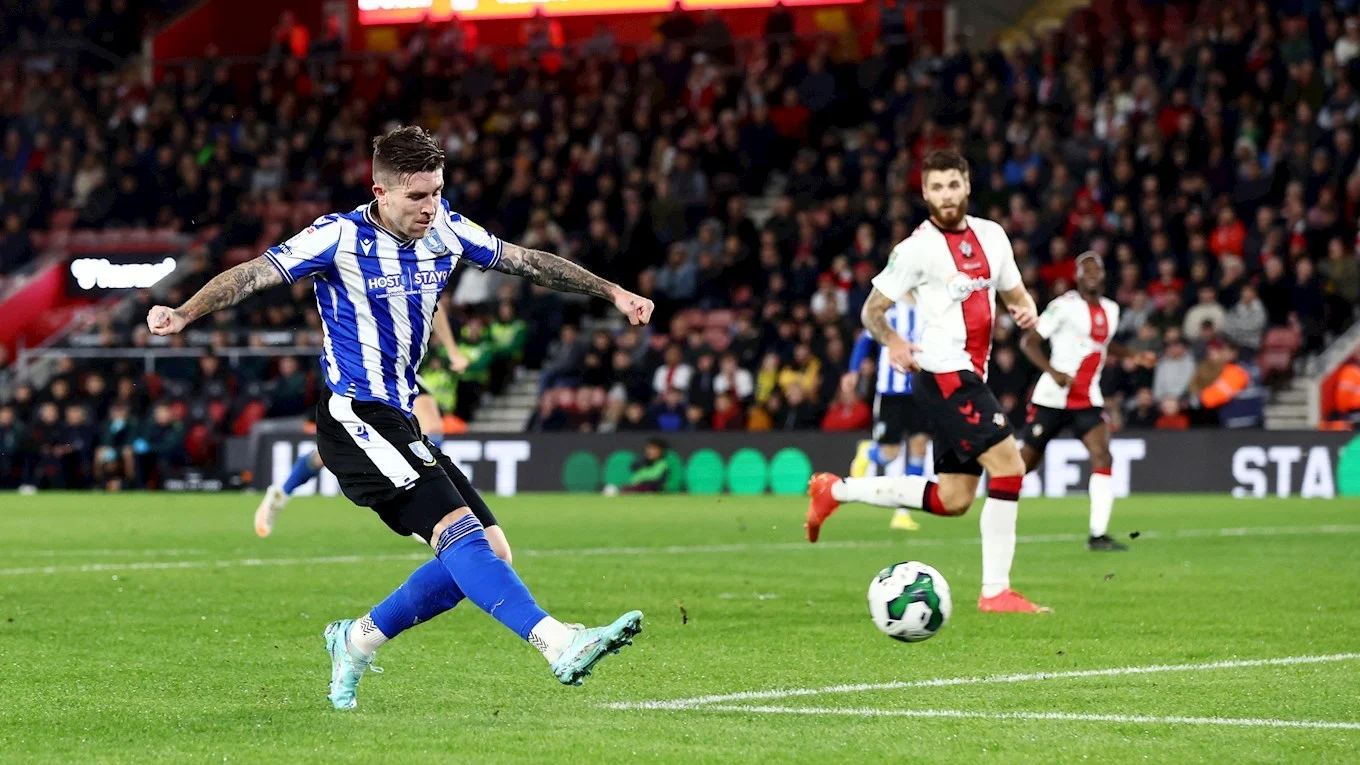While this collection of boxers did not achieve sustained success, they did make the most of their opportunity before ultimately fading from the spotlight.
George Rinhart/Corbis-Getty Images
Decades before the 12-round title fight, and shortly before the 15-round championship length was the law of the land, Willard toppled storied heavyweight champion Jack Johnson in the 26th round of their 1915 title bout. Willard caught the longtime champ in his later years and was losing most of the rounds, but the then-33-year-old Kansas native stopped the 37-year-old champion in their Havana, Cuba, attrition war. Willard defended his title once in 1916 but lost the strap to Jack Dempsey via third-round stoppage in 1919.

PhotoQuest-Getty Images
More trivia question than one-hit wonder, Flynn is the only man to knock out Jack Dempsey. This came in 1917, two years before “The Manassa Mauler” began his heavyweight title reign, but it’s notable because of Flynn’s journeyman career. At age 37, Flynn met a 21-year-old Dempsey in a town near Salt Lake City and was 69-34-23 by that point. The 5-foot-10 Flynn nevertheless floored the future all-time great multiple times in Round 1, forcing a stoppage from Dempsey’s corner. Dempsey KO’d Flynn in Round 1 when they met in 1918 in Illinois. Flynn, who fought Jack Johnson and Sam Langford a combined eight times, ended his career with 45 losses.
 Barratts/PA Images-Getty Images
Barratts/PA Images-Getty ImagesProbably the greatest hit on this list, Turpin beat Sugar Ray Robinson — the sport’s pound-for-pound king — at the height of his powers in 1951. The Brit bested the American legend in July 1951 via decision in England before losing the middleweight title back to Robinson two months later in the U.S. The once-untouchable welterweight fought seven times in Europe that summer but ended the tour on a sour note. Turpin was a longtime contender who in the multi-belt era would have enjoyed more championship opportunities. But his name will live on as long as boxing exists because of his upset.
 Bettmann-Getty Images
Bettmann-Getty ImagesJoe Brown became a Hall of Famer after his career included a then-record 11 defenses of the lightweight title. A non-title fight in 1960 ranks as a rather random slipup. Portilla stopped the champion via a sixth-round TKO, with Brown suffering broken ribs in the San Antonio bout. Portilla had lost his previous three fights and was 22-29-1 when he met Brown. The Americans never faced off again; Portilla ended his career with a sub-.500 record a year later. “Old Bones” Brown went on to 121 wins; he was Ring Magazine’s Fighter of the Year in 1961 and continued his six-year title reign until 1962.

Universal/Corbis/VCG-Getty Images
Hailing from the New York town where the International Boxing Hall of Fame would later be built, Canastota, Backus also has notable bloodlines in being Carmen Basilio’s nephew. In 1970, Backus beat one of his era’s best fighters. Earning a title shot that oddly occurred in Syracuse, near Backus’ hometown, the underdog stopped welterweight champion Jose Napoles on cuts in a bloody brawl to win the WBA and WBC 147-pound belts. The American entered that fight at 29-10-4 but held the straps for six months. The Cuban future Hall of Famer knocked out Backus in June 1971. Backus fought until 1978 but never challenged for a belt again.

Bettmann-Getty Images
The elder Spinks brother joined Michael in claiming gold at the 1976 Summer Olympics. Leon became a big name quicker as a pro. Given a title shot against Muhammad Ali in his eighth pro fight, Spinks wrested the belt away from the then-36-year-old boxing deity in their February 1978 matchup. Spinks remains the least experienced heavyweight to win a title. Instead of facing mandatory challenger Ken Norton, Spinks gave Ali an immediate rematch. In better shape for the September 1978 fight, Ali prevailed via decision. “Neon Leon” earned title shots at heavyweight and cruiserweight but lost both via knockout, ending his career 26-17-3.

The Ring Magazine-Getty Images
After Sugar Ray Leonard took back his welterweight titles from Roberto Duran, the Panamanian icon moved up to the junior middleweight division. While campaigning at 154, he endured a shocking upset loss to Laing in 1982. The then-28-year-old Jamaican outboxed Duran in the second half of their 10-round non-title bout and earned a split-decision win, one Ring Magazine dubbed as the Upset of the Year. While Duran recovered and a year later went 15 rounds with fellow all-timer Marvelous Marvin Hagler at middleweight, Laing never fought for a major title in a career that lasted until 1994.

Christophe Elise-Icon Sportswire
Wilfredo Gomez became a three-division champion in 1985, winning a junior lightweight belt. Just over a year later, the 29-year-old Puerto Rican faced mandatory challenger Layne in his homeland. A Panamanian fighter, Layne enjoyed the best night of his career. Trailing on all three scorecards, Layne dropped Gomez in the eighth round and earned a stoppage win after flooring the champion after vicious combinations in the ninth . Layne did not follow this up well, losing the 130-pound title to Brian Mitchell four months later and dropping his next five fights — one of which to Pernell Whitaker — before retiring at 15-12.

Ethan Miller-Getty Images
Never a top contender, Young enjoyed the distinction of being the only man to beat Aaron Pryor. An oft-avoided junior welterweight with devastating power, Pryor dealt with drug problems for much of his career. After his two defeats of Alexis Arguello, Pryor trudged on through 1985. He came back to the ring in ’87, meeting Young in his return fight. Young knocked Pryor down twice in the matchup of Ohio natives, the second time leaving the ex-140-pound kingpin dazed to force a stoppage. In the car-leasing business at the time of the fight, the then-28-year-old Young fought only twice more before ending his career, 31-7-1.

Liao Yujie/Xinhua/ZUMAPRESS.com-Icon Sportswire
Molinares made his name on one of the more controversial endings in modern boxing history. The Colombian exited a 1988 welterweight title fight with Marlon Starling’s belt. Molinares knocked out Starling with a right hand thrown just after the bell , but referee Joe Cortez counted the champion out. The bout ended up being ruled a no-contest. It did change boxing henceforth, with the 10-second warning spawning because of this sequence. Molinares (23-2) fought twice more; Starling won another welterweight belt by beating Lloyd Honeyghan in 1989.

Gilbert Iundt/Corbis/VCG-Getty Images
One of the many welterweight champs in the lower-profile years between the Sugar Ray Leonard-Tommy Hearns-Roberto Duran era and Pernell Whitaker’s run, ousted champion Donald Curry moved up to junior middleweight to earn a belt there. His first defense came against Jacquot. The bout occurred in Jacquot’s native France and ended in a narrow unanimous-decision win for the challenger, doubling as Ring Magazine’s 1989 Upset of the Year. Curry went on to Hall of Fame induction. Jacquot lost the 154-pound belt in his first defense — a first-round KO against John “The Beast” Mugabi.

Ken Levine-Getty Images
Author of the most shocking upset in boxing history, Douglas laid a blueprint for Andy Ruiz’s title run nearly 30 years later. The inconsistent heavyweight put it all together on Feb. 11, 1990, by knocking out Mike Tyson after a fusillade of 10th-round punches. Tyson was a less-polished version of the combination machine he once was but was a 42-to-1 favorite to beat Douglas in Tokyo. Douglas weighed 246 pounds for his October defense against Evander Holyfield, up 15 from his Japan weight, and he was stopped in three rounds. He faded out of the title picture quickly, but his upset will live on forever.

Mark Morrison-Getty Images
In the years immediately following “Rocky V,” Tommy Morrison became a top heavyweight contender. The up-and-comer was being groomed for a title shot, but the less experienced Bentt intervened. After defeating George Foreman for the then-lesser-regarded WBO belt, Morrison ran into Bentt in what was supposed to be an October 1993 tuneup. In just his 11th fight, the Brit knocked out Morrison in the first round . Morrison recovered but was never the same. Bentt lost his belt to Herbie Hide and abruptly retired due to health issues. He later followed Morrison’s on-screen lead by playing Sonny Liston in “Ali.”

Gary M. Prior/Allsport-Getty Images
Little challenged former middleweight champion Michael Nunn for Nunn’s super middleweight title in 1994 and did so as a 40-1 underdog. The Philadelphia native, despite possessing punching power ex-sparring partner Bernard Hopkins said “couldn’t crack an egg,” knocked Nunn down in Round 1 and upset him via unanimous decision in England. When Little won the title, his record stood at 22-13-2. He could not replicate his career-defining performance in the first defense of the 168-pound strap, losing to future years-long champ Frankie Liles. Little died of colon cancer in 2000 in Reading, Pennsylvania.

John Gichigi/Allsport-Getty Images
The boxing world first discovered Lennox Lewis‘ vulnerability in 1994 when McCall — an opponent during a stay-busy fight while Lewis sought a matchup with Riddick Bowe or Evander Holyfield — knocked him out early in the second round . The new WBC champion defeated a 45-year-old Larry Holmes in his first defense before dropping the belt to Frank Bruno. Lewis-McCall II brought one of the strangest episodes in boxing history. Challenging Lewis for the vacant WBC belt in 1997, McCall lost after he broke down in tears midfight. McCall enjoyed highs and lows henceforth, last fighting in May at age 54.

Nagel-Sportbild/ullstein bild-Getty Images
We come to the Wladimir Klitschko section of the list. The first fighter to successfully test the younger Klitschko’s chin, Puritty carried a 24-13-1 record into the 1998 fight in Klitschko’s native Ukraine. The then-22-year-old Klitschko lost via TKO when his corner stopped the fight, and the 1996 Olympic gold medalist’s rise was delayed a bit. The then-32-year-old American had lost three of his previous four fights. Puritty finished his career with 20 losses, another of those coming to elder Klitschko brother, Vitali, in 2001.

John Gichigi/Allsport-Getty Images
By 2001 Lewis had become by far the top heavyweight in the game, beating Evander Holyfield in 1999 to earn that distinction. But heavy underdog Hasim Rahman dropped the champion with a right hand in the fifth round of their April 2001 fight in South Africa. A Baltimore native who’d lost twice as a heavyweight contender, Rahman collected two major belts that night. Lewis, however, quickly atoned for his slipup — which came after he filmed scenes for “Ocean’s Eleven” — by flattening Rahman in Round 4 of their November rematch. Rahman remained a contender for years but did not come close to the heights he hit in 2001.

Andreas Rentz/Bongarts-Getty Images
Beginning a mid-career descent for this era’s premier heavyweight, Sanders exposed Wladimir Klitschko’s suspect chin in his March 2003 wipeout of the future Hall of Famer. The smaller South African southpaw, at 37, connected many times with straight left hands, and the referee stopped the bout in Round 2 after the fourth knockdown. Sanders’ next fight, however, came against the elder Klitschko. Less susceptible to flash knockdowns, Vitali dominated the 2004 fight. Sanders fought four more times before retiring.

AJ Mast-Icon Sportswire
Wladimir Klitschko’s career hit a crisis point after a 2004 meeting with Brewster. The then-30-year-old American became the third mid-tier heavyweight to knock out the super-prospect, stopping the then-28-year-old Ukrainian in the fifth round of their April ’04 encounter. Despite being outlanded 199-70, Brewster followed Sanders’ lead and capitalized on Klitschko’s defensive weaknesses to win a vacant WBO belt. He defended it three times, once knocking out a faded Andrew Golota, before losing to modestly regarded Siarhei Liakhovich. Brewster’s 2007 rematch with an Emanuel Steward-trained Klitschko ended in a seventh-round KO loss.

Ethan Miller-Getty Images
Baldomir entered his 2006 title bout with Zab Judah as a nine-loss fighter but outworked the unified welterweight champion in a unanimous-decision win. The Argentinian outlanded Judah, 161-91, but was given a narrow decision. Baldomir captured Judah’s Ring Magazine belt and the lineal 147-pound title, but sanctioning-fee issues allowed the loser to keep two alphabet belts. Baldomir beat a shopworn Arturo Gatti later in ’06 but soon saw his stock crater. Matched up against apex Floyd Mayweather Jr., Baldomir did not win a round on two scorecards. He was one of Canelo Alvarez’s first high-profile wins in 2010.

Dave Thompson/PA Images-Getty Images
Ticketed for superstardom, Amir Khan saw his trajectory change in 2008. An Olympic gold medalist at just 17 in 2004, Khan was voted ESPN’s Prospect of the Year in 2007, was 18-0 and held a minor lightweight title when he met Prescott in September ’08. The Colombian challenger shocked the boxing world by stopping the British talent in Round 1. The hand-speed demon’s suspect chin revealed itself that night in Manchester. Khan has since been knocked out by Danny Garcia, Canelo Alvarez and Terence Crawford. Prescott was unbeaten then; he’s since lost 18 times, including defeats against Crawford and Mike Alvarado.

Jeoffrey Maitem-Getty Images
Jaro entered a 2012 clash with elite flyweight champion Pongsaklek Wonjongkam as a 10-loss challenger. Wonjongkam was 83-3-2. Fighters in the low weight divisions tend to age faster than their heavier contemporaries. Wonjongkam first won the WBC flyweight title in 2001 and after losing it in 2007 recaptured it a year later and reigned until the younger Jaro upended him. A then-30-year-old Filipino, Jaro knocked the 35-year-old Thai champion down four times and won via sixth-round KO. Jaro proceeded to lose his next three fights.

Ben Warden-Icon Sportswire
The Floyd Mayweather Jr.– Manny Pacquiao super-fight’s five-year delay was an indictment of boxing. While the former deserves more blame, Pacquiao’s final pre-Mayweather opponent was the most random stopgap during the welterweight kingpins’ standoff. Given a June 2014 title shot against WBO junior welter champion Ruslan Provodnikov, Algieri outlanded the rugged Russian by a significant margin but looked the worse for wear after being knocked down twice. After his decision win, Algieri faced Pacquiao in a Macau, China, matchup. Pacman knocked the lanky 140-pound champ down six times, but being in that fight made Algieri a big name.

Bradley Kanaris/Getty Images
Horn is 31 and still active, but his career has trended toward one-hit wonder status since he received a gift decision over Pacquiao in 2017. Although outlanded 182-92 and nearly stopped in the ninth round, Horn captured Pacquiao’s WBO welterweight belt on an Australian afternoon. The underdog’s size posed a problem for the then-38-year-old Filipino, but the majority of the public did not give Horn many rounds. The judges did, scoring a unanimous-decision win in one of this era’s biggest upsets. Horn lost his title to Terence Crawford and lost in August in a middleweight debut.
Sam Robinson is a Kansas City, Mo.-based writer who mostly writes about the NFL. He has covered sports for nearly 10 years. Boxing, the Royals and Pandora stations featuring female rock protagonists are some of his go-tos. Occasionally interesting tweets @SRobinson25.




